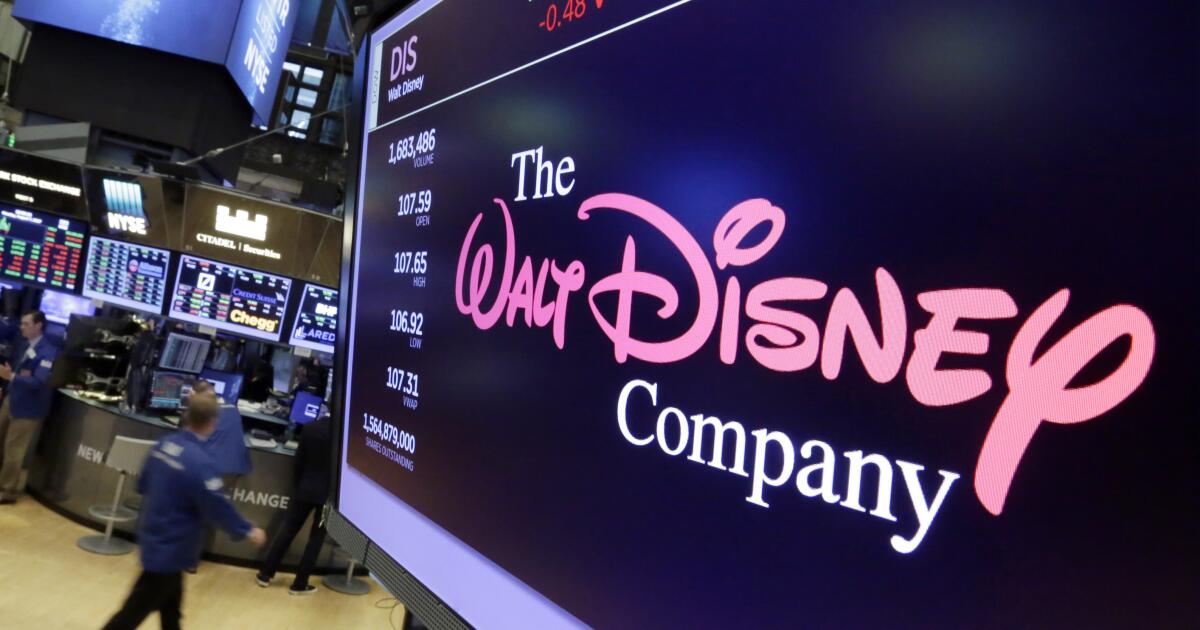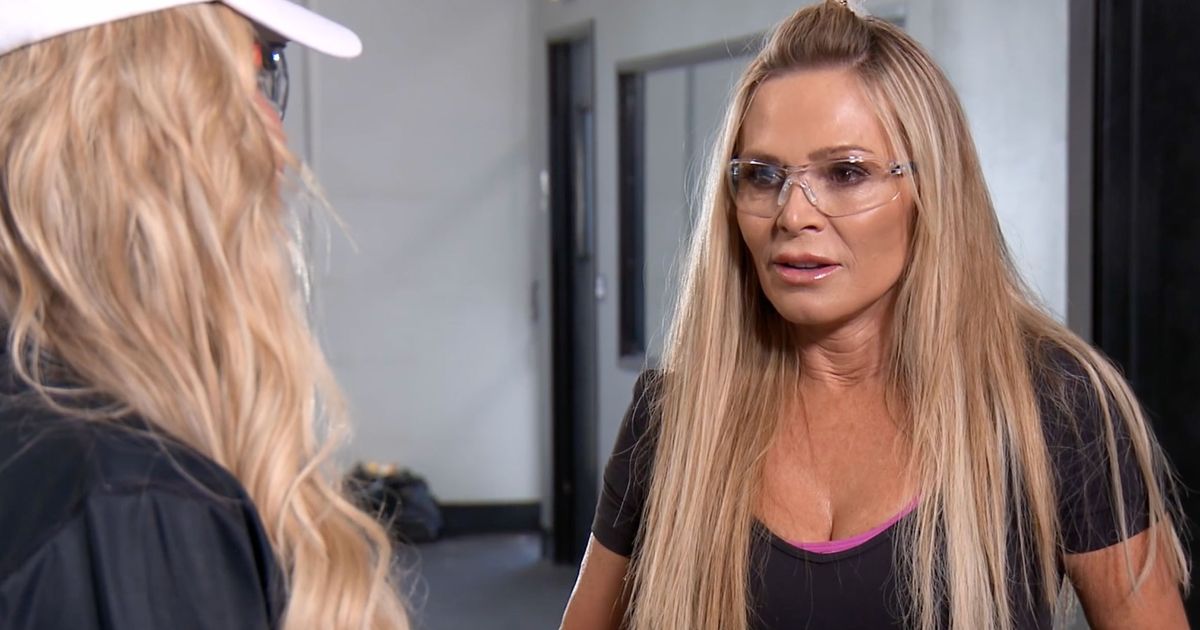Tech scion David Ellison battled hard to get Paramount Global.
The Skydance Media chief executive first made overtures last summer to Paramount’s nonexecutive chair, Shari Redstone, then spent months negotiating and renegotiating a deal acceptable to Redstone, Paramount’s board and the company’s shareholders.
Now that he’s clinched the company through a complicated, multipronged transaction valued at more than $8 billion, the real work begins. Ellison is set to become the company’s chief executive, while former NBCUniversal Chief Executive Jeff Shell will be president (Shell left his old job after acknowledging an “inappropriate relationship” with a colleague).
The legacy media and entertainment company has major challenges Ellison will need to address quickly to get Paramount back on the right footing, once the deal closes during the first half of next year.
Like many entertainment companies, Paramount is facing a decline in theatrical box office revenue as audiences haven’t returned to movie theaters with the same frequency as before the COVID-19 pandemic. Add to that Paramount’s particular woes with its money-losing streaming business as well as its heavy investment in cable networks that face challenges from cord cutting and declining advertising dollars, and it’s clear there is a lot for Ellison and his investors to fix.
“There really are amazing assets in this company,” said Jessica Reif Ehrlich, senior media and entertainment analyst at Bank of America Securities. “They just haven’t been managed well.”
For example, Paramount Pictures’ historic Melrose Avenue studio is valuable, as is Paramount’s broadcast network CBS. Some of the company’s cable networks, which include Nickelodeon, BET and MTV, have prized content and recognizable names. But they’re shells of what they used to be, Reif Ehrlich said.
“Every part of the business is under siege at this moment,” she said. “They really do need to resolve what they will be and have a clear point of view and way to achieve that as soon as possible.”
Paramount’s heavy debt load
First and foremost is paying down Paramount’s debt. Part of the company’s balance sheet problem will be addressed with a $1.5-billion cash infusion from Skydance, RedBird Capital Partners and the private equity firm KKR.
Getting Paramount on solid financial footing is key to its future success.
“This is very much about the fact that David Ellison and Skydance have had a 15-year relationship with Paramount,” RedBird Capital founder Gerry Cardinale said in an interview. “So it made it a lot easier to look at a strategic recapitalization, as opposed to just doing a deal.”
Paramount’s three current co-CEOs have already embarked on a $500-million cost-cutting plan that will continue as the Skydance transaction unspools. That plan involves evaluating the sale of certain Paramount assets, potentially including BET, as well as an unspecified number of layoffs. During an investor presentation Monday, Skydance executives said they had identified as much as $2 billion in “cost efficiencies” that would help increase cash flow.
Kenneth Leon, research director at CFRA Research, sounded cautiously optimistic about the plan in a note to investors.
“We think the new company has major opportunities for content production and distribution, but the challenges of competing in today’s disruptive movies and entertainment industry remain,” he wrote.
Cable networks: Asset and liability
It’s no secret that linear television revenue is declining as more customers cut the cord and abandon their traditional cable and satellite packages. But though the financial returns are diminishing, the cable networks are still making money for Paramount. That makes them an important asset to keep managing — strategically.
Last year, Paramount’s TV media segment, which includes CBS and the cable networks, brought in about $20 billion, or 68% of the company’s total revenue, according to its annual report. But that was about an 8% decrease compared with 2022.
Things were slightly better in the first fiscal quarter of 2024, when TV media brought in $5.2 billion in revenue, an increase of 0.7% compared with the same period a year ago.
“The linear business declining is not necessarily a bad story for Paramount,” said Laurent Yoon, senior analyst at Bernstein. “It’s already reflected in the stock price, and it’s not Paramount’s problem alone. There’s not much they can do. They just have to manage the decline.”
During Monday’s investor call, Skydance and RedBird executives touted the value and reach of CBS, noting that the network was a “driver” for the company.
The studio: A new shine on the crown jewel?
As one of Hollywood’s first studios, 112-year-old Paramount Pictures is the crown jewel of the company. That’s certainly how Sumner Redstone, Shari’s late father, saw it.
It has churned out such landmark films as “The Godfather,” “Chinatown” and “Breakfast at Tiffany’s,” while moving into the modern age with franchises like “Top Gun” and “Star Trek.” But the company’s studio business has been a mixed bag of late.
Paramount’s filmed entertainment segment, which includes Paramount Pictures, its animation arm, Nickelodeon Studios and Miramax, brought in about $3 billion in revenue last year, down 20% from the previous year, according to regulatory filings. For the three-month period ending March 31, Paramount’s filmed entertainment sector revenue totaled $605 million, up about 3% from last year.
In some respects, the studio is being hit by the same external forces battering the rest of the entertainment industry — the 2024 box office receipts are not reaching the levels they did last year and fall far short of pre-pandemic levels. But the studio’s creative strategy needs to be rethought, as well as film budgets, said Reif Ehrlich of Bank of America.
Rethinking the studio strategy means leaning into franchises, Shell said in an interview.
“In Hollywood, you really make money when you have big franchises and are able to monetize them, and they really have not done that very effectively at Paramount,” Shell said. “For example, there’s no ‘Top Gun’ theme park ride anywhere in the world.”
If the studio’s finances were optimized — meaning if it cut back on expenses — it could be a $3-billion to $4-billion business with a potential for a 10% to 15% margin, said Yoon of Bernstein.
“Paramount obviously has a great heritage when it comes to moviemaking,” he said. “It feels like they should do better, but they’re not. But it does have the potential to stabilize.”
Ellison also said the Skydance deal would bolster the combined company’s animation capabilities, allowing Paramount to expand its family entertainment business.
Paramount+: The struggles of streaming profitability
The foray into the streaming business has been a costly one for Paramount. The company was late to join the so-called streaming wars, lagging behind competitors Netflix and even Disney, and then spent heavily on the service.
Even so, the company is struggling to add subscribers, leading to about $2 billion in losses for Paramount+ since launch. In the first fiscal quarter of 2024, however, the company’s streaming division reported revenue of nearly $1.88 billion, up 24% compared with a year earlier. The segment’s quarterly loss was $287 million.
Ellison laid out a plan Monday for tech upgrades to the Paramount+ service, including improved ad technology and a better algorithmic recommendation engine that could help reduce subscriber churn and increase users’ time on the platform.
One option currently being explored by the company is a joint venture for the streaming service, Paramount executives have said. Having a partner could help Paramount turn a profit in streaming, Yoon said.
Such a partnership would not be unprecedented. In May, Warner Bros. Discovery and the Walt Disney Co. said they would join together to offer a new streaming bundle this summer that would allow subscribers to access Max, Disney+ and Hulu in the same deal. Separately, Disney, Warner Bros. and Fox are preparing to launch a streaming venture for sports.
“It’s generally believed at this point that Paramount+ could be profitable in 2025, but ‘profitable’ is relative,” Yoon said. “Is it a dollar or is it a billion? They need to make sure the margin increases.”
Newsletter
Inside the business of entertainment
The Wide Shot brings you news, analysis and insights on everything from streaming wars to production — and what it all means for the future.
You may occasionally receive promotional content from the Los Angeles Times.















